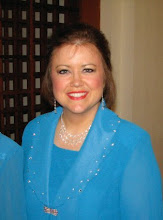A less critical but occasionally relevant literary concern is the location of prepositional phrases within a sentence.
As a reminder, a prepositional phrase starts with a preposition and ends with a noun or pronoun and gives extra information about where or when the action of the sentence is taking place.
For example: “on the moon,” “after the movies,” “over the river,” “through the woods,” “to Grandmother’s house,” “with my little sister,” and so on.
In a simple sentence, the prepositional phrase is usually right next to the verb or noun it modifies, so there is no confusion. However, in longer sentences, especially where there is more than one prepositional phrase, there is potential to cloud up the author’s intent.
“Mrs. Smith put on her raincoat after the movie with the flowers.”
So, is it the raincoat or the movie that has the flowers? In this case (I decided), the raincoat has flowers on it, so a better sentence would put that description right next to the appropriate noun. “Mrs. Smith put on her raincoat with the flowers after the movie.” Or, even better, “After the movie, Mrs. Smith put on her raincoat with the flowers.”
I recently heard an example of this on the radio. The speaker said, “Why can’t I find a plumber who will tell me how much he charges to fix my pipes over the phone?” My answer was, because he can’t fix your pipes over the phone!
Of course, the point of the advertisement was to emphasize the fact that this particular plumber gave estimates over the phone (the same price for everybody, in fact), hence the reason to put that phrase last. But, it would have made a little more sense if the “over the phone” phrase had come right after the “tell me” part, since it relates directly to where the telling does or does not take place.
My corrected version would be, “Why can’t I find a plumber who will tell me over the phone how much he charges to fix my pipes?” The actor speaking the line could always put a little vocal emphasis on the underlined part if desired.
I used to work in advertising, though, so I know final decisions on copy are not always based on anything your English teacher tried to impart with all that sentence diagramming.

No comments:
Post a Comment